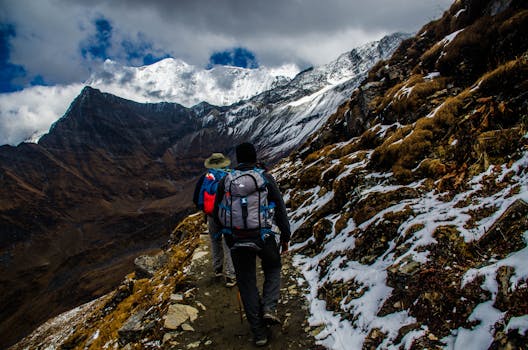Tips for Surviving a Multi-Day Trek in the Andes Mountains of South America
The Andes Mountains, stretching over 7,000 kilometers along the western edge of South America, offer some of the most breathtaking landscapes and challenging treks in the world. From the snow-capped peaks of Patagonia to the lush valleys of Peru, the Andes are a hiker’s paradise. However, embarking on a multi-day trek in this rugged terrain requires careful preparation and knowledge. Here are essential tips to ensure a safe and enjoyable adventure.
Preparation is Key
Before setting foot on the trails, thorough preparation is crucial. The Andes can be unpredictable, and being well-prepared can make all the difference.
- Research Your Route: Familiarize yourself with the trail you plan to take. Popular treks like the Inca Trail or the Torres del Paine Circuit have well-documented paths, but always check for recent trail conditions and weather forecasts.
- Physical Conditioning: Start training at least a few months in advance. Focus on cardiovascular fitness, strength training, and endurance exercises. Hiking with a weighted backpack can simulate the conditions you’ll face.
- Gear Up Wisely: Invest in high-quality gear, including a durable backpack, waterproof clothing, and sturdy hiking boots. Don’t forget essentials like a first-aid kit, a multi-tool, and a reliable map or GPS device.
Acclimatization: A Vital Step
One of the most significant challenges of trekking in the Andes is altitude sickness, which can occur at elevations above 2,500 meters (8,200 feet). Acclimatization is essential to avoid serious health issues.
- Gradual Ascent: Ascend slowly to give your body time to adjust. Aim to increase your elevation by no more than 300-500 meters (1,000-1,600 feet) per day.
- Stay Hydrated: Drink plenty of water to help your body acclimatize. Dehydration can exacerbate symptoms of altitude sickness.
- Recognize Symptoms: Be aware of the signs of altitude sickness, which include headaches, nausea, and dizziness. If symptoms worsen, descend to a lower altitude immediately.
Pack Smart: Essentials for the Trek
What you carry can significantly impact your trekking experience. Packing smartly ensures you have what you need without overburdening yourself.
- Lightweight Tent and Sleeping Bag: Choose a tent that is easy to set up and a sleeping bag suitable for the temperatures you’ll encounter.
- Food and Cooking Gear: Bring lightweight, high-calorie food options like nuts, energy bars, and dehydrated meals. A compact stove and cooking utensils will also be necessary.
- Navigation Tools: A physical map, compass, and GPS device are essential for navigating the often rugged and remote trails.
Stay Safe and Respect Nature
Safety should always be a priority while trekking in the Andes. The environment can be harsh, and respecting nature is crucial for both your safety and the preservation of the landscape.
- Travel in Groups: Whenever possible, trek with a group. This not only enhances safety but also makes the experience more enjoyable.
- Leave No Trace: Follow the Leave No Trace principles to minimize your impact on the environment. Pack out all trash and avoid disturbing wildlife.
- Emergency Preparedness: Have a plan in case of emergencies. Carry a whistle, a mirror for signaling, and know the location of the nearest help points.
Conclusion: Embrace the Adventure
Trekking in the Andes Mountains is an unforgettable experience filled with stunning vistas and rich cultural encounters. By preparing adequately, acclimatizing properly, packing smartly, and prioritizing safety, you can navigate this majestic landscape with confidence. Remember, the journey is as important as the destination, so take the time to enjoy the breathtaking beauty around you. With these tips in mind, you’re well on your way to a successful multi-day trek in one of the world’s most awe-inspiring mountain ranges.
